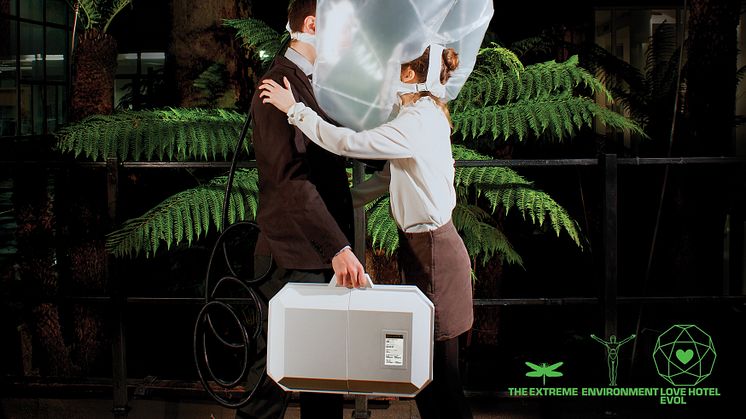
Press release -
Homes of the future at Nationalmuseum Design this autumn
This autumn, Nationalmuseum Design will present Domestic Futures, featuring examples of futuristic design with the potential to change the everyday life. In the exhibition designers from all over the world speculate about the possible domestic life of the future. Examples include generating your own electricity, keeping self-grown organs in the fridge, and even owning an apartment on another planet.
Domestic Futures speculates how design and products have the power to influence our everyday life. One example is the Smartphone that in less than a decade has become a dominant feature in our daily life. In the exhibition designers from all over the world will speculate about how our living rooms may look in the next 10, 20 or 50 years from now, and how future products will affect our daily routines in the future households. Will we “cook” in-vitro meals and keep replacement organs at home in the fridge, do we want to generate our own electricity and collect our food in the backyard, or do we maybe even own an apartment on another planet?
The exhibition will comprise three living environments with artifacts and projects that allow visitors to explore what the future may look like. It demonstrates how biology, science and technology can be integrated in the kitchen. What we might keep in the freezer or the pantry, how we will recycle our waste or monitor our health. It can also be about reverting to a self-sufficient lifestyle, independent of grocery stores. From being able to make a fire and catch food with our bare hands to generating our own electricity. The exhibition also asks questions like what it will take to be able to leave Earth and live on another planet, how food cultivated on Mars will taste and what the latest fashion trends will be like in outer space.
The exhibition challenges the visitors to step into their possible future households and moreover to think about what kind of future we want, and what kind we don’t want.
In all, some 30 designers will contribute to the exhibition, including Thomas Thwaites (UK), James King (UK), Mike Thompson (UK), Ma’ayan Pesach (Israel), Chmara.Rosinke (Germany, Poland), Susana Soares (Portugal), Studio Stefan Schwabe (Germany), Nelly Ben Hayoun (France), Veronica Ranner (Germany), Mars One (the Netherlands), Marcia Nolte (the Netherlands), Grietje Schepers (the Netherlands), NASA/JPL (USA), Studio Swine (Japan, UK) och Ai Hasegawa (Japan).
Domestic Futures will be on show at Nationalmuseum Design, located inside Kulturhuset Stadsteatern in Stockholm, from 18 September to 15 November 2015.
Curator: Lisanne Fransen (the Netherlands, based in Sweden)
Scenography: Studio Harm Rensink (the Netherlands)
www.domesticfutures.com
Press contact
Hanna Tottmar, Press Officer: hanna.tottmar@nationalmuseum.se, +46 767 234632
Caption
Ai Hasegawa, The Extreme Environment Love Hotel, Carboniferous Room. Photo: Ai Hasegawa and Joseph Popper.
Categories
Nationalmuseum is Sweden’s premier museum of art and design. The collections comprise older paintings, sculpture, drawings and graphic art, and applied art and design up to the present day. The museum building is currently under renovation and scheduled to open again in 2018. In the meantime, the museum will continue its activities through collaborations both in Sweden and abroad as well as temporary exhibitions at the Royal Swedish Academy of Fine Arts, Fredsgatan 12, and Nationalmuseum Design in Kulturhuset in Stockholm. More information is available at www.nationalmuseum.se.
BMW Sverige AB is the main sponsor of Nationalmuseum Design. Nationalmuseum also collaborates with Svenska Dagbladet, FCB Fältman & Malmén and the Grand Hôtel Stockholm.

